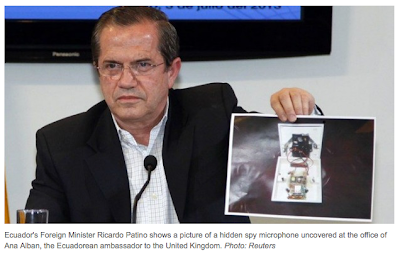 |
| What do Elves pass, if not gas? |
Now, what's fun about the app is it captures these special moments when kids are asleep.
How does it work? Well, the Santa Spy Cam has a built in sensor that flips on in your own home when Santa or his elves are nearby.
"Fully approved by The North Pole Clandestine Services Bureau (NPCSB) to capture live-action video of Elves as they visit your home during the holiday season. And of course, the big visit, by the big man on Christmas Eve, Santa Claus." (more)
I just tested it.
Works remarkable well.
You get three free scenes; others at 99 cents each.
~Kevin














